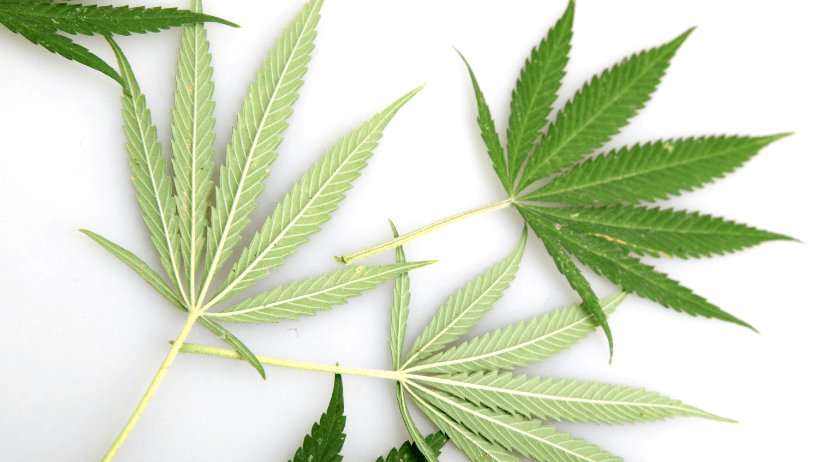Key Takeaways:
- Different cannabis strains, including Indica, Sativa, and Hybrids, offer unique effects tailored to individual needs and wellness goals.
- Understanding the role of cannabinoids and terpenes is essential for selecting the right strain for desired medical or recreational outcomes.
- Choosing reputable sources and understanding consumption methods impact the effectiveness and safety of cannabis use.
- Ongoing research and evidence-based insights continue to debunk myths, enhancing the therapeutic potential of cannabis for personalized medicine.
In the ever-expanding world of cannabis, the distinction between Indica, Sativa, and Hybrid strains forms the cornerstone of understanding this versatile plant.
Each variety offers a unique constellation of effects, appearances, and cultivation needs, catering to a wide range of consumer preferences and medical requirements. This article serves as your comprehensive guide to navigating the intricate landscape of marijuana strains.
From the deeply relaxing and sedative effects of Indica to the energizing and uplifting experience of Sativa, and the balanced nuances of Hybrid varieties, we explore the science, culture, and practical considerations that define these categories.
Whether you’re a curious newcomer or a seasoned enthusiast seeking a deeper understanding, our exploration will equip you with the knowledge to make informed choices and maximize your cannabis experience.

The Basics of Cannabis Strains
Cannabis, a plant that has been part of human culture for millennia, is now at the forefront of scientific research and social reform.
At the core of the discussion are the cannabis strains, which refer to the various breeds and varieties of the plant, each with its own unique profile of effects, aromas, and appearances.
Overview of Cannabis Strains
Cannabis strains are distinct forms of the cannabis plant, primarily categorized into Indica, Sativa, and Hybrid varieties. These classifications are based on the plant’s morphology, growth environment, and the effects they induce [1].
Indica strains are known for their relaxing and sedative effects, Sativa strains for their energizing and uplifting influence, and Hybrid strains offer a blend of both, depending on their genetic lineage.
Historical Background and Origin of Strain Categorization
The distinction between Indica and Cannabis Sativa dates back to the 18th century when differences in the plant’s structure and resin production were first noted.
Initially, these classifications were purely botanical, relating to the plant’s physical characteristics and geographic origin—Indica strains originating from the Hindu Kush mountains of India and Sativa strains from equatorial regions.
However, as the cultural and medicinal use of cannabis spread globally, these categories also began to describe the varying effects and therapeutic benefits, leading to the contemporary understanding of cannabis strains.
Key Components of Cannabis
The complexity and diversity of cannabis strains can be attributed to the plant’s rich composition of cannabinoids and terpenes, which work synergistically to produce a wide array of effects.
- Cannabinoids (THC vs. CBD): Cannabis contains over a hundred cannabinoids, with Tetrahydrocannabinol (THC) and Cannabidiol (CBD) being the most prominent. THC is the primary psychoactive component that produces the “high” associated with cannabis use, offering euphoria, relaxation, and, in some cases, altered sensory perception. CBD, on the other hand, is non-psychoactive and has been studied for its potential therapeutic effects, including anti-inflammatory, analgesic, and anxiolytic properties. The ratio of THC to CBD in a strain significantly influences its overall effect, with higher THC levels typically leading to more potent psychoactive outcomes and higher CBD levels offering more subdued medicinal benefits.
- Terpenes and Their Effects: Terpenes are aromatic compounds found in many plants, including cannabis, contributing to their distinctive scents and flavors. In cannabis, terpenes play a crucial role beyond just influencing the sensory experience; they also affect the plant’s therapeutic qualities and can modulate the effects of cannabinoids through what is known as the “entourage effect.” For instance, myrcene, the most common terpene found in cannabis, is believed to enhance THC’s sedative properties, while limonene has mood-elevating qualities.
Types of Cannabis Strains

The distinction between Indica, Sativa, and Hybrid cannabis strains represents a foundational aspect of cannabis culture and knowledge.
However, the industry’s evolving understanding emphasizes the importance of considering chemovars and individual biochemistry in predicting the effects of cannabis.
This nuanced approach recognizes the diversity of experiences with cannabis plants, encouraging users to explore and find the strains that best meet their needs and preferences.
Indica
- Physical Appearance: Indica cannabis strains are known for their distinctive short and stocky stature, a physical trait adapted to the harsh, dry, and turbulent climate of their native Central Asia. These plants typically have broad leaves with a darker green hue, contributing to their dense and bushy appearance.
- Typical Effects and Benefits: Cannabis Indica varieties are celebrated for their deeply relaxing and sedative effects, often described as a “body high.” Users may experience muscle relaxation, stress relief, and a sense of calm, making Indica strains ideal for evening or night-time use. They are also sought after for pain relief, helping with insomnia, and reducing anxiety.
Popular Indica Strains
- Northern Lights: Known for its potent calming and euphoric effects, Northern Lights is a staple Indica strain that aids in sleep and alleviates stress.
- Granddaddy Purple: This strain is revered for its ability to induce relaxation throughout the body, coupled with a sweet berry and grape aroma. It’s commonly used for pain, stress, insomnia, and muscle spasms.
Sativa
- Physical Appearance: Sativa plants are easily identifiable by their tall, slender build and light green, finger-like leaves. Originating in warmer climates, these plants can grow to impressive heights, often requiring longer to mature than their Indica counterparts.
- Typical Effects and Benefits: Sativa strains are synonymous with a “mind high,” a stimulating and energizing effect that enhances creativity, focus, and mood. Ideal for daytime use, they are often utilized to combat fatigue, depression, and mood disorders, offering users an uplifted, alert, and euphoric experience.
Popular Sativa Strains
- Sour Diesel: A fast-acting strain that delivers energizing and dreamy cerebral effects, Sour Diesel is favored for stress, pain, and depression relief.
- Jack Herer: Named after the cannabis activist, this strain is known for its blissful, clear-headed, and creative effects, often used for treating low mood and fatigue.
Hybrid
- Definition and Breeding Background: Hybrid strains are cultivated by crossing Sativa and Indica plants, aiming to capture the desired traits from each parent strain. The breeding of hybrids allows for a vast diversity of cannabis varieties, tailored to offer a specific balance of effects, flavors, and aromas.
- Balance of Effects (Indica vs. Sativa Dominance): Hybrid strains can lean towards either Indica or Sativa dominance or present a balanced profile of both. The resulting effects can therefore range from stimulating and energizing to relaxing and sedative, depending on the genetic lineage and the ratios of cannabinoids and terpenes.
Popular Hybrid Strains
- Blue Dream: With a balance leaning towards Sativa, Blue Dream offers full-body relaxation coupled with cerebral stimulation, making it a favorite among those seeking pain relief without sedation.
- GG4 (formerly Gorilla Glue #4): A potent hybrid renowned for its heavy-handed euphoria and relaxation, GG4 can glue users to the couch, making it effective for treating pain and sleep disorders.
Selecting The Right Strain For You

Navigating the world of cannabis can be both exciting and overwhelming, especially with the plethora of strains available, each offering unique effects and benefits.
Understanding how to select the right strain for your needs is essential for a satisfying and beneficial experience. Here, we look at the factors to consider when making your choice, how to comprehend strain potency and quality, and tips for purchasing quality cannabis.
Factors to Consider
Desired Effects (relaxation, energy, pain relief, etc.)
Your primary reason for using cannabis plays a pivotal role in strain selection. Whether you’re seeking relaxation and sleepiness from Indica strains, the energy and focus offered by Sativa strains, or a balanced effect from Hybrids, identifying your desired outcome is the first step.
Tolerance and Experience Level
Individual tolerance levels significantly affect how you respond to different cannabis strains. Beginners might prefer strains with lower THC content or a higher CBD to THC ratio to ease into the experience, while seasoned users may seek out more potent options.
Medical vs. Recreational Use
Medical users often have specific therapeutic goals, such as pain relief, anxiety reduction, or appetite stimulation, which can guide the choice of strain. Recreational users, on the other hand, might prioritize effects like euphoria, creativity, or relaxation.
Understanding Strain Potency and Quality
- THC and CBD Ratios: The cannabinoids THC and CBD play crucial roles in the strain’s effects. Strains with high THC levels are more likely to produce potent psychoactive effects, while high CBD strains may offer therapeutic benefits without intense psychoactivity. Balancing these ratios can achieve a desired level of euphoria and medical benefit.
- Importance of Terpene Profiles: Terpenes are aromatic compounds that contribute to the strain’s scent and flavor, but they also influence its effects. For example, myrcene is associated with relaxation, while limonene may elevate mood. Understanding terpene profiles can help you choose a strain that meets your sensory preferences and desired effects.
How to Purchase Quality Cannabis
Labels and test results provide vital information about a strain’s cannabinoid and terpene profiles, potency, and safety. Look for information on THC and CBD percentages, terpene types and concentrations, and tests for contaminants such as pesticides and molds.
Choosing where to purchase cannabis is as crucial as selecting the strain itself. Opt for dispensaries and retailers known for their quality products, knowledgeable staff, and commitment to customer education. A reputable provider should be transparent about their sourcing, testing, and quality assurance practices.
The journey to finding the perfect cannabis strain involves understanding your needs, the intricacies of strain potency and quality, and where to find reputable sources.
By considering your desired effects, experience level, and the therapeutic versus recreational nature of your use, you can navigate the diverse cannabis landscape more confidently.
Ways to Consume Cannabis

The manner in which cannabis is consumed plays a critical role in determining the onset, intensity, and duration of its effects. From traditional smoking to the use of topicals, each method offers unique benefits and considerations.
This section explores the various consumption methods, comparing their impacts and helping you choose the one that best suits your needs and preferences.
Traditional Smoking vs. Vaping
- Traditional Smoking: The most recognized method of cannabis consumption, smoking involves combusting the plant material and inhaling the smoke. This method allows for rapid absorption of cannabinoids into the bloodstream through the lungs, with effects typically felt within minutes. The intensity of the high from smoking can be strong and immediate, making dosage control challenging for some users. However, it remains a popular choice for its convenience and immediate relief.
- Vaping: Vaping heats cannabis to a temperature that vaporizes, but does not combust, the cannabinoids, producing a vapor instead of smoke. This method is considered less harsh on the lungs and reduces the exposure to toxins found in smoke. Vaping offers a more discreet and controlled experience, with many users reporting a cleaner taste and a more precise way to gauge consumption. The effects of vaping are similar to smoking in terms of onset time, but the experience can differ based on the temperature settings and the device used.
Edibles and Concentrates
- Edibles: Cannabis-infused foods and beverages provide an alternative to inhalation methods, offering a longer-lasting and more intense effect. When consumed orally, THC is metabolized by the liver into 11-hydroxy-THC, a potent compound that can produce a deeper, more prolonged high. Edibles take longer to take effect, usually 30 minutes to 2 hours, but the effects can last for several hours, making dosage control crucial to avoid overconsumption.
- Concentrates: Cannabis concentrates, such as waxes, oils, and shatters, are highly potent forms of the plant’s active ingredients. These can be consumed through dabbing, a form of vaporization, or added to edibles and topicals. Concentrates offer a powerful and immediate effect, making them suitable for experienced users with higher tolerance levels. Their high potency requires careful dosage management to ensure a pleasant experience.
Topicals and Transdermal Methods
- Topicals: Cannabis-infused creams, balms, and lotions are applied directly to the skin for localized relief of pain, soreness, and inflammation. Topicals are ideal for those seeking the therapeutic benefits of cannabis without psychoactive effects, as the cannabinoids do not typically enter the bloodstream in significant amounts.
- Transdermal Methods: Transdermal patches and gels deliver cannabis directly into the bloodstream through the skin, offering a controlled release of cannabinoids for systemic effects. This method allows for consistent dosing over an extended period, making it suitable for medical use. Transdermal methods can provide both therapeutic benefits and psychoactive effects, depending on the cannabinoid formulation.
The Role of Cannabis in Medicine and Wellness
Cannabis has steadily gained recognition for its therapeutic potential, prompting a deeper examination of how different strains can contribute to medicine and wellness.
The understanding that Indica, Sativa, and Hybrid strains each possess unique properties has paved the way for targeted treatments, addressing a wide range of symptoms and conditions.
This section explores the medical benefits of specific strains, while also addressing common health concerns and myths surrounding cannabis use [2].
Medical Benefits of Specific Strains
Indica for Relaxation and Sleep
The calming effects of Indica strains are well-documented, making them a preferred choice for individuals seeking relief from insomnia, anxiety, and stress. Indica strains help prepare the body for sleep by inducing a state of relaxation and euphoria, promoting a deeper and more restorative rest.
Sativa for Energy and Focus
Sativa strains stand out for their energizing effects, which can enhance creativity, focus, and mood. These strains are particularly beneficial during the daytime, helping combat fatigue and the symptoms of depression and anxiety.
For those needing a mental lift or an increase in productivity, Sativa offers an uplifting experience.
Hybrid for Balanced Effects
Hybrid strains, with their blend of Indica and Sativa characteristics, provide a versatile option that can be tailored to individual needs.
Whether seeking a strain that offers relaxation without sedation or stimulation without anxiety, hybrids can deliver a balanced effect, making them suitable for both daytime and night-time use.
Addressing Health Concerns and Myths
Despite its therapeutic applications, cannabis use is often surrounded by misconceptions. One prevalent myth is the idea that all cannabis consumption inevitably leads to “getting high” and impairments.
However, strains high in CBD and low in THC can offer medicinal benefits without significant psychoactive effects.
Another misconception is that cannabis is a “gateway” drug, a theory that lacks substantial empirical support, especially when considering its medical use under professional guidance.
The evolving landscape of cannabis research has begun to provide a clearer understanding of its benefits and risks.
Studies have consistently shown the efficacy of cannabis in treating chronic pain, reducing the severity of seizures in epilepsy, and alleviating symptoms in conditions such as multiple sclerosis and PTSD [3].
Moreover, the shift towards analyzing the chemical composition of strains—focusing on cannabinoids and terpenes—offers a more accurate prediction of their effects, challenging the traditional Indica/Sativa/Hybrid classification system.
Conclusion
Exploring cannabis reveals a nuanced world of strains and consumption methods, each offering unique effects for wellness and medical use. Understanding cannabinoids and terpenes and choosing reputable sources is crucial.
As research evolves, so does our grasp of cannabis’s potential, guiding informed choices for health, dispelling myths, and promising personalized therapeutic advancements.
Sources:
[1] Caporuscio, J. (2020). What are the most popular strains of cannabis? [online] Medicalnewstoday.com. Available at: https://www.medicalnewstoday.com/articles/marijuana-strains
[2] and, E., Health, Board and Evidence, A. (2017). Therapeutic Effects of Cannabis and Cannabinoids. [online] Nih.gov. Available at: https://www.ncbi.nlm.nih.gov/books/NBK425767/
[3] Abizaid, A., Zul Merali and Hymie Anisman (2019). Cannabis: A potential efficacious intervention for PTSD or simply snake oil? Journal of Psychiatry & Neuroscience, [online] 44(2), pp.75–78. doi: https://doi.org/10.1503/jpn.190021.
